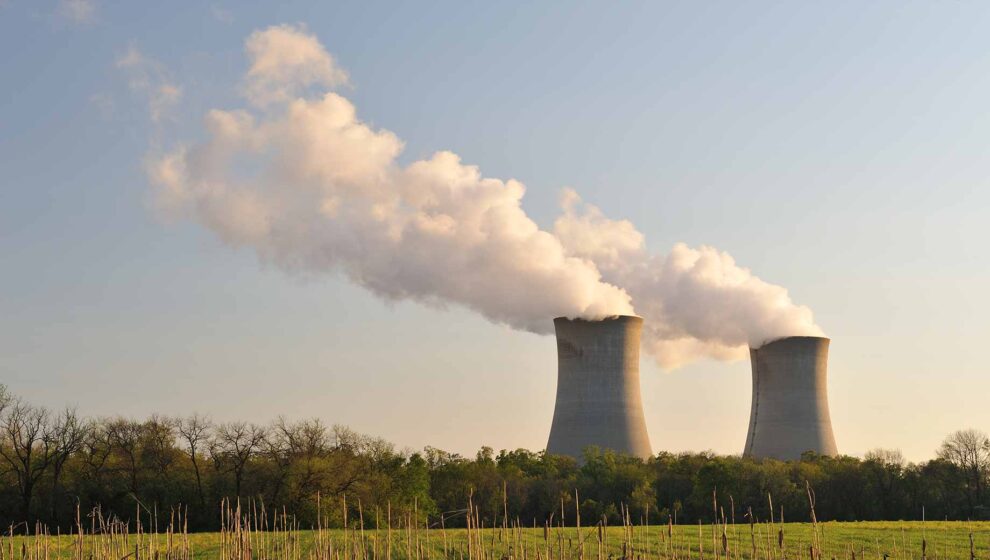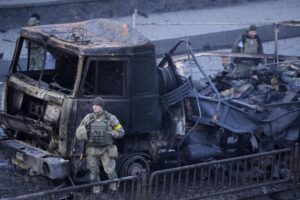An International Atomic Energy Agency (IAEA) team of experts said Morocco is committed to maintaining and strengthening its regulatory framework for nuclear and radiation safety. The team said the country has taken effective steps to establish a new legal and regulatory framework. It recommended additional measures to complete the transition from a 1971 law and align the new regulations with IAEA safety standards. The team also called for improving the regulatory oversight of the country’s research reactor.
The Integrated Regulatory Review Service (IRRS) team concluded the 10-day mission to Morocco on 6 December 2023. The mission was conducted at the request of the Government of Morocco and hosted by the “Agence Marocaine de Sûreté et de Sécurité Nucléaires et Radiologiques” (AMSSNuR), the national regulatory body for nuclear and radiation safety and nuclear security.
The sixteen-member team, comprised of eleven senior regulatory experts from eight countries, as well as five IAEA staff members, reviewed the governmental, legal and regulatory framework for nuclear and radiation safety in Morocco. The IRRS team conducted interviews and discussions with AMSSNuR staff. Team members also observed regulatory oversight activities at a research reactor, a cyclotron to produce isotopes for use in medicine and their transport, a radioactive waste management facility, a radiotherapy department in a clinic and a company for industrial radiography. These visits included discussions with management and staff of the facilities.
Using IAEA safety standards and international good practices, IRRS missions are designed to strengthen the effectiveness of the national regulatory infrastructure while recognizing the responsibility of each country to ensure nuclear and radiation safety. This full scope mission covered all types of nuclear and radiation facilities and activities and exposures regulated in Morocco and the IRRS team developed a broad understanding of Morocco’s regulatory infrastructure. While Morocco has invited other types of IAEA peer review and advisory missions before, this was the first IRRS mission to the country.
Morocco uses nuclear and radiation technologies for medical, industrial, agricultural, research and educational applications. The National Centre for Nuclear Energy, Sciences and Technology (CNESTEN) operates an MA-R1 TRIGA MARK II research reactor at the Maâmora Nuclear Research Centre. Morocco does not operate any nuclear power reactors but considers nuclear power production as a long-term option among other low carbon energy sources to meet the country’s future needs.
“Morocco has made significant progress in establishing an effective and consistent regulatory framework for nuclear and radiation safety,” said IRRS team leader Fabien Feron, Director of Transport and Sources Department with the French Nuclear Safety Authority (ASN). “The Government and AMSSNuR should continue working together to ensure draft regulations are all promulgated and that a periodic safety review is soon undertaken at the CNESTEN research reactor.”
The mission identified several good performances by AMSSNuR, including:
- Promotional and supporting actions aiming to enhance nuclear and radiation safety among countries in the region.
- Proactive communication with interested parties.
- The timely establishment of a comprehensive integrated management system.
- The development of a Geographic Information System (GIS) application displaying the location of all facilities and important features of radioactive sources being directly available to the Ministry of Interior for emergency preparedness and response purposes.
The IRRS team recognized Morocco’s invitation for a full-scope IRRS mission as a sign of openness, transparency, and commitment to continuous improvement for safety.
However, the team said that the main challenges for Morocco are to complete the transition phase to a new national nuclear legal and regulatory framework. The Government adopted a new law in 2014 which led to a reconfiguration of the nuclear oversight authorities with AMSSNuR as the independent regulatory body. The other key challenge is to bring the regulations in line with the IAEA safety standards.
The IRRS team identified several recommendations and suggestions, including:
- The Government and AMSSNuR should improve the regulatory oversight of the research reactor with regards to the periodic safety review and the inspection programme.
- The Government should establish and implement a national policy and strategy for nuclear safety, for the long-term safe management of radioactive waste and nuclear spent fuel, and for decommissioning activities.
- The Government should ensure that authorization decisions for category I facilities do not affect regulatory independence.
- AMSSNuR should continue liaising with the Government to ensure that the regulations to be promulgated are consistent with the IAEA safety standards.
- AMSSNuR should continue improving its capabilities and tools in emergency preparedness and response.
“I thank the IAEA for providing us with the precious recommendations and suggestions aiming to enhance the regulatory oversight for nuclear and radiation safety in the facilities and activities using or producing ionizing radiation in the Kingdom of Morocco. AMSSNuR’s good performances, recognized by the IAEA experts in terms of international cooperation, information and communication, management system and emergency preparedness and response, demonstrate the commitment of our Agency to be a model for regulatory bodies in Africa and in the world,” said Saïd Mouline, Director General of AMSSNuR.
“This mission gives a prominent visibility to the work accomplished by Morocco to enhance its regulatory effectiveness, and equally important provides a strong motivation to strengthen it further,” said Lydie Evrard, IAEA Deputy Director General and Head of the Department of Nuclear Safety and Security, in her closing remarks at the end of the mission.
The final mission report will be provided to the Government in about three months. Morocco plans to make the report public.
IAEA Safety Standards
The IAEA safety standards provide a robust framework of fundamental principles, requirements, and guidance to ensure safety. They reflect an international consensus and serve as a global reference for protecting people and the environment from the harmful effects of ionizing radiation.
Source : IAEA





